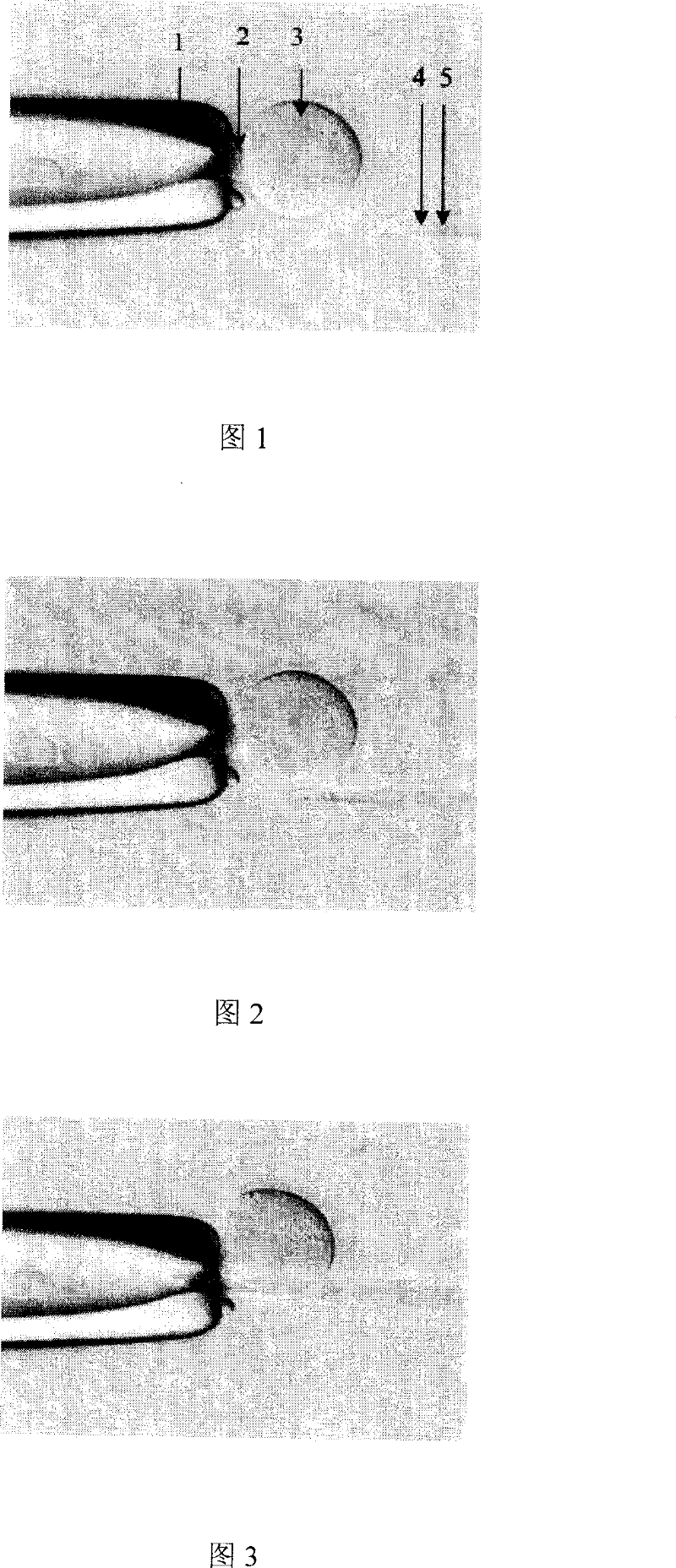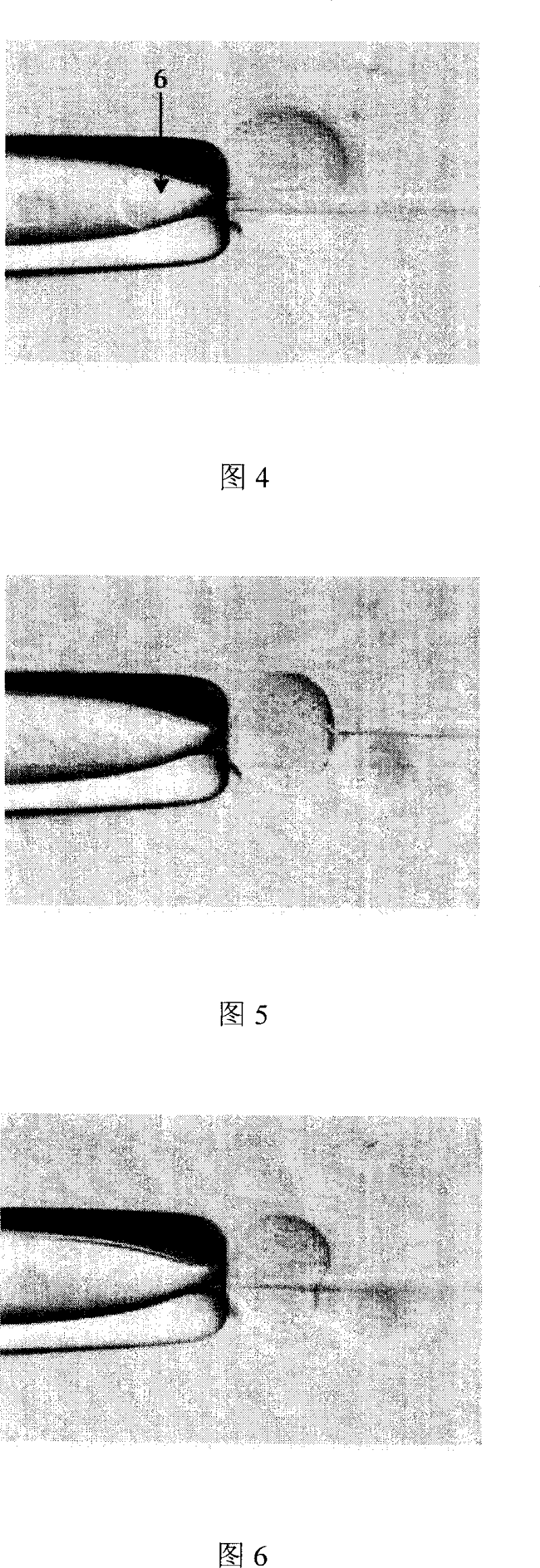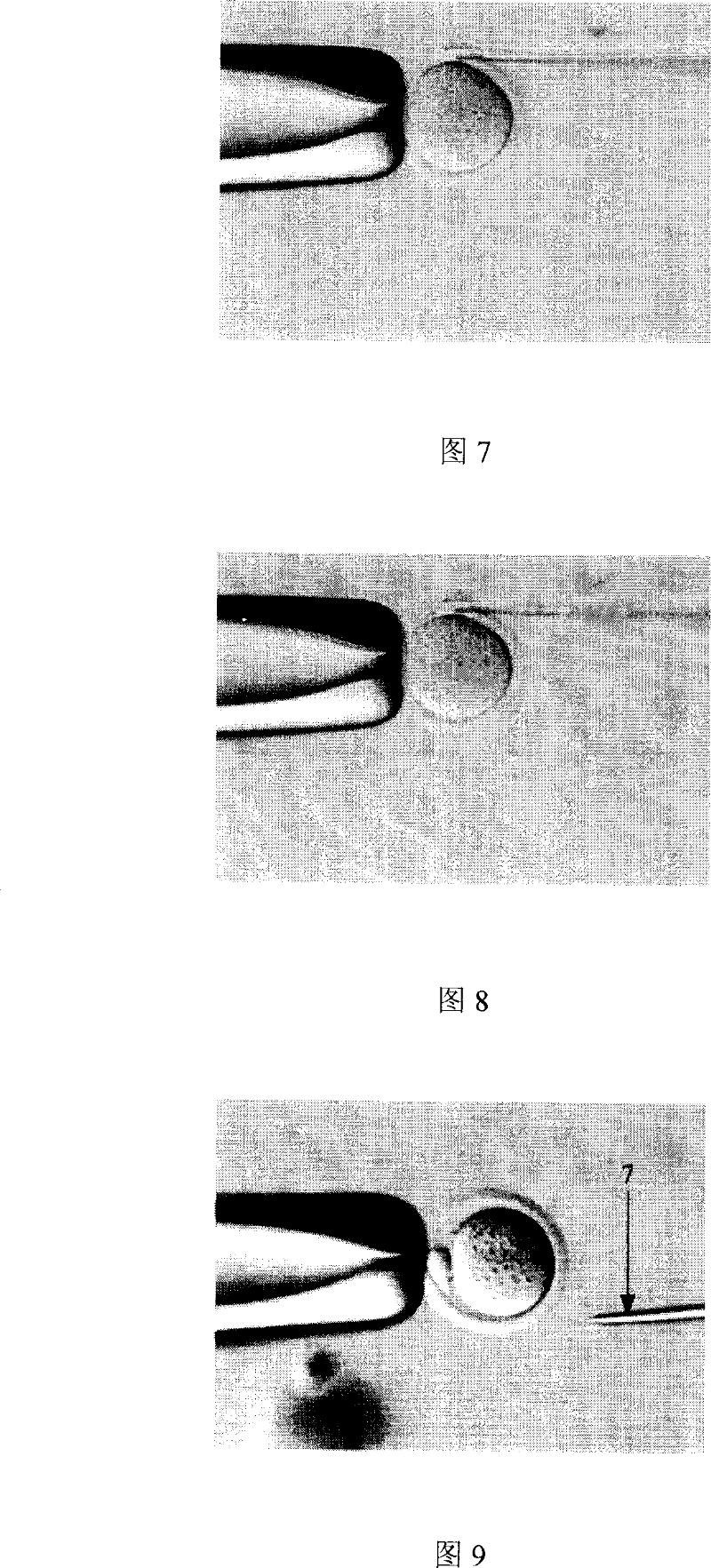Transplantation method for nucleus
A cell nucleus and oocyte technology, applied in the field of cell engineering, can solve the problems of wasting too much time, inaccurate, and removing the target nucleus and cytoplasm, and achieve the effects of improving the survival rate, reducing time and easy operation.
- Summary
- Abstract
- Description
- Claims
- Application Information
AI Technical Summary
Problems solved by technology
Method used
Image
Examples
Embodiment 1
[0047] (1) Use an injection needle with a diameter of 8 μm to absorb granule cells, repeatedly blow and blow the cells to rupture the cell membrane, and then suck them into the injection needle. leave appropriate gaps;
[0048] (2) Get the mice that have undergone superovulation treatment, kill them by necking, and take out the oviducts;
[0049] (3) Pull out the oocytes with granulosa cells in the ampulla of the oviduct with a fine needle, then put them into the culture medium containing hyaluronidase, and treat them in a 37°C incubator for 5 minutes to completely remove the granulosa cells;
[0050] (4) Take oocytes with complete polar bodies in good condition and fix them in the direction of 9 o'clock with a 15 μm ovum-holding needle (Fig. 1);
[0051] (5) Move the tip of the injection needle on the other side to directly below the oocyte along the opposite direction of the egg-holding needle (Figure 2);
[0052] (6) Move the injection needle upwards, squeeze the oocytes ...
Embodiment 2
[0060] (1) Use an injection needle with a diameter of 8 μm to absorb granule cells, repeatedly blow and blow the cells to rupture the cell membrane, and then suck them into the injection needle. leave appropriate gaps;
[0061] (2) Get the mice that have undergone superovulation treatment, kill them by necking, and take out the oviducts;
[0062] (3) Pull out the oocytes with granulosa cells in the ampulla of the oviduct with a fine needle, then put them into the culture medium containing hyaluronidase, and treat them in a 37°C incubator for 5 minutes to completely remove the granulosa cells;
[0063] (4) Take oocytes with complete polar bodies in good condition and fix them in the direction of 9 o'clock with a 20 μm ovum-holding needle (Fig. 1);
[0064] (5) Move the tip of the injection needle on the other side to directly below the oocyte along the opposite direction of the egg-holding needle (Figure 2);
[0065] (6) Move the injection needle upwards, squeeze the oocytes ...
Embodiment 3
[0073] (1) Use an injection needle with a diameter of 8 μm to absorb granule cells, repeatedly blow and blow the cells to rupture the cell membrane, and then suck them into the injection needle. leave appropriate gaps;
[0074] (2) Get the mice that have undergone superovulation treatment, kill them by necking, and take out the oviducts;
[0075] (3) Pull out the oocytes with granulosa cells in the ampulla of the oviduct with a fine needle, then put them into the culture medium containing hyaluronidase, and treat them in a 37°C incubator for 5 minutes to completely remove the granulosa cells;
[0076] (4) Take oocytes with complete polar bodies in good condition and fix them in the direction of 9 o'clock with a 30 μm ovum-holding needle (Fig. 1);
[0077] (5) Move the tip of the injection needle on the other side to directly below the oocyte along the opposite direction of the egg-holding needle (Figure 2);
[0078] (6) Move the injection needle upwards, squeeze the oocytes ...
PUM
| Property | Measurement | Unit |
|---|---|---|
| diameter | aaaaa | aaaaa |
| diameter | aaaaa | aaaaa |
Abstract
Description
Claims
Application Information
 Login to View More
Login to View More - R&D
- Intellectual Property
- Life Sciences
- Materials
- Tech Scout
- Unparalleled Data Quality
- Higher Quality Content
- 60% Fewer Hallucinations
Browse by: Latest US Patents, China's latest patents, Technical Efficacy Thesaurus, Application Domain, Technology Topic, Popular Technical Reports.
© 2025 PatSnap. All rights reserved.Legal|Privacy policy|Modern Slavery Act Transparency Statement|Sitemap|About US| Contact US: help@patsnap.com



